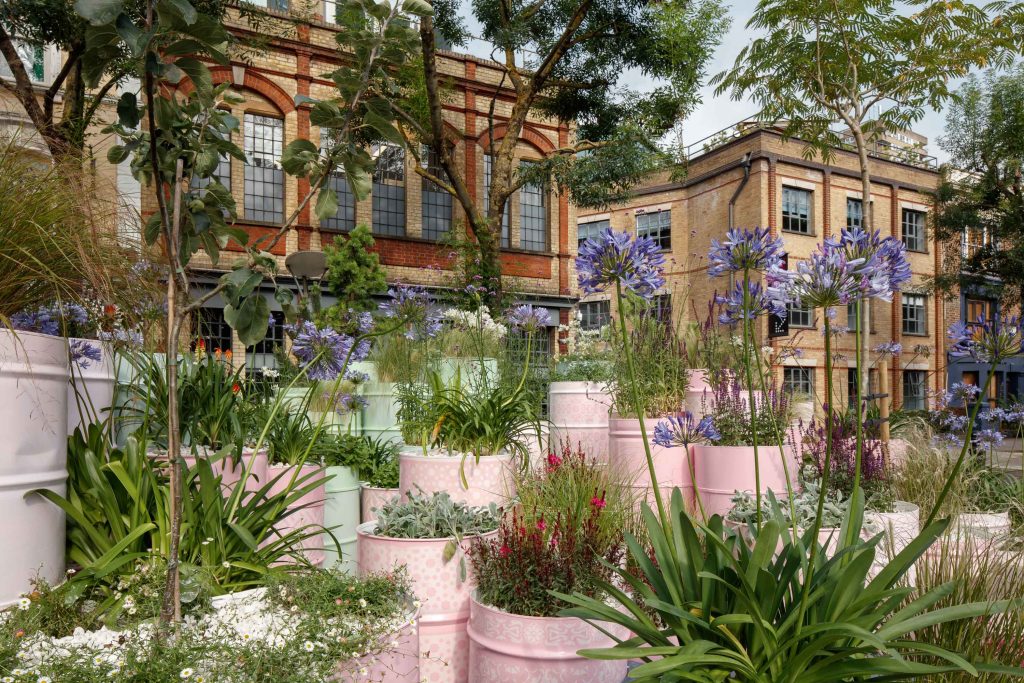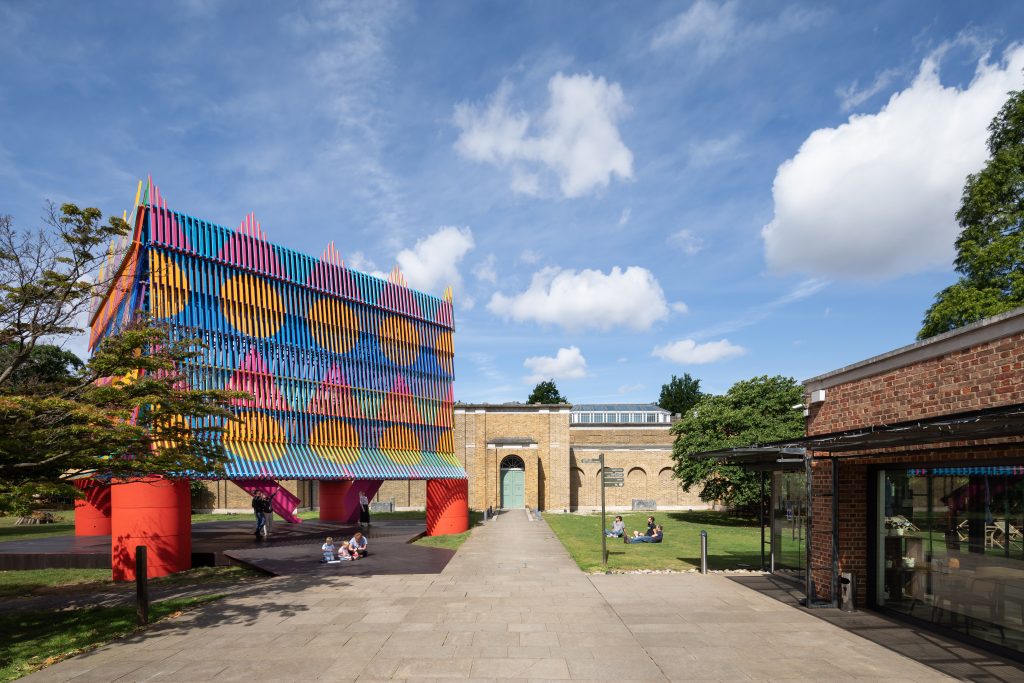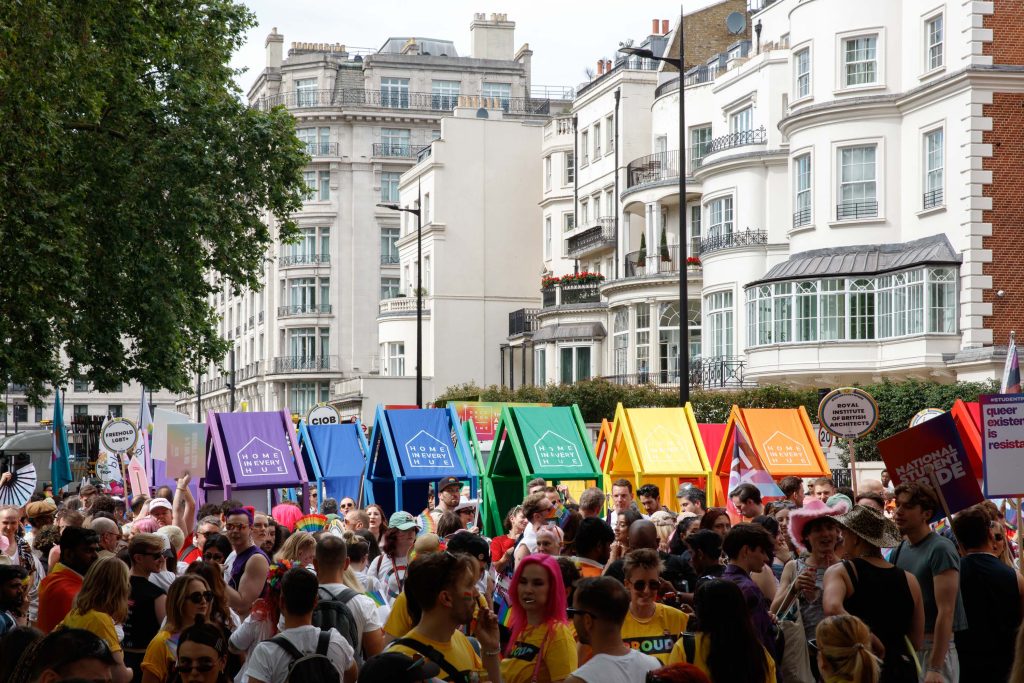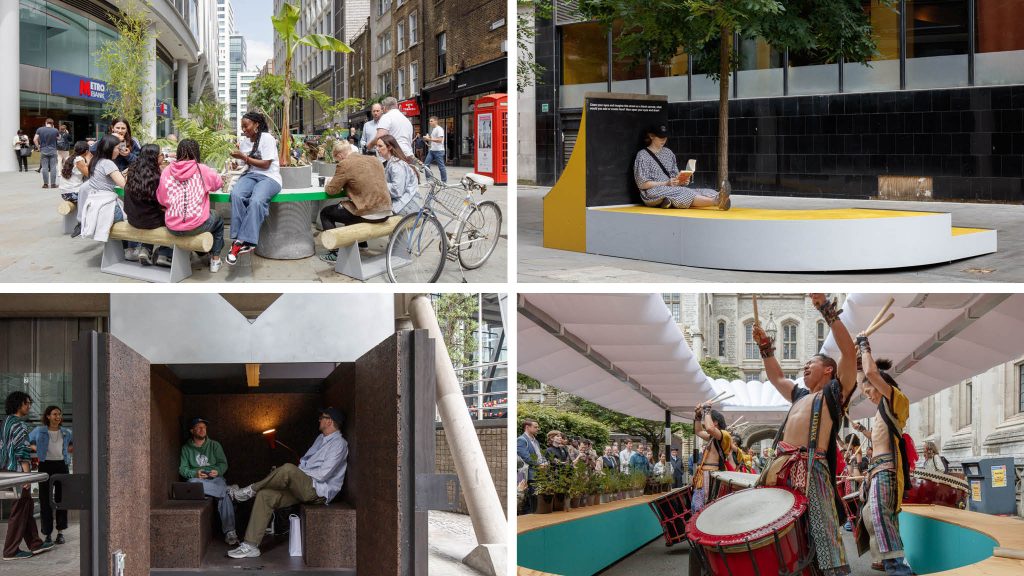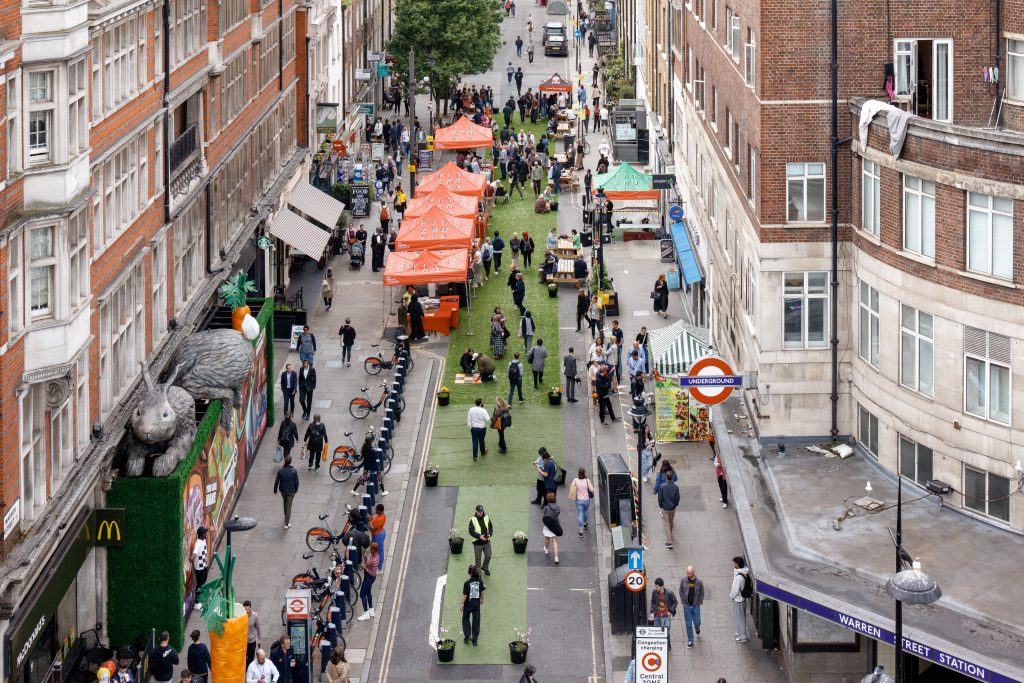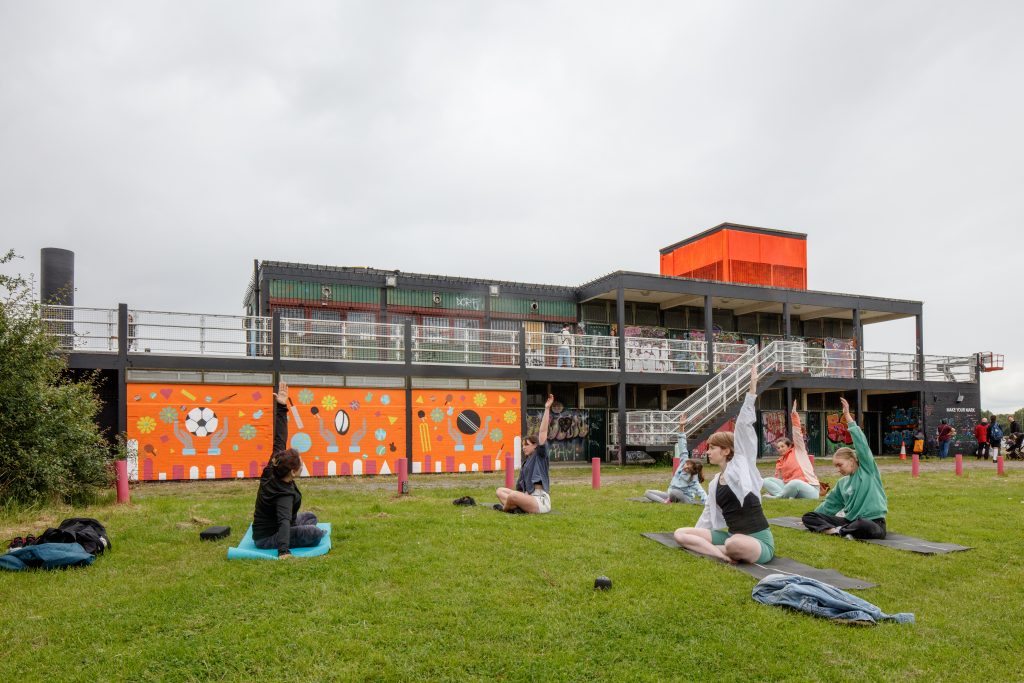Last month, together with Butler’s Wharf Riverside Trust (BWRT), we were delighted to revealed the 6 shortlisted design teams for our ‘Reimagining Butler’s Wharf’ competition. Selected from over 50 entries, these six teams have now each developed their design vision for this cherished spot along the capital’s riverside.
Building upon the site’s rich heritage, and the potential in the historic jetty’s relationship with the River Thames, each team’s design response offers a unique take on the area’s long-term transformation. From today, we’re now delighted to launch our ‘Reimagining Butler’s Wharf’ virtual exhibition, accessible to everyone to explore until 16 October.
Each of these shortlisted proposals represents the teams’ initial ideas, which will be built upon, developed further and scaled up or down with input from stakeholders, the local community and this exhibition. Therefore, this online display offers the opportunity to not only see more of each design so far, but also read more about what each vision hopes to deliver for the area – plus, you’ll then have the chance to rank and comment on your top three proposals!
To hear each of the teams sharing their design concept, click on each of the videos below.
1. Land to River, River to Land by Hayatsu Architects and Stinsensqueeze
The project provides an opportunity to capture the memories embedded in the river bed, through physical and graphical manifestations of the river onto the jetty by preserving and repurposing existing conditions.
New wavy paving patterns sit within the existing stone pavers, by cutting and infilling with reconfigured stones, pebbles and objects found from the Thames beach. We are interested in collecting the materials through a series of mudlarking workshops with local volunteers.
A curved continuous line of text is painted onto the existing paving, weaving another wave, to encourage people to move through the entire length of the jetty in a more animated way. The text presents the history of the wharf, by selecting stories and events from local archives and residents. We propose to work with Bermondsey based storytellers Vanessa Woolf and Nigel of Bermondsey.
We are interested in creating islands of planting mounds around the existing maritime objects. Inspired by Derek Jarman’s prospect cottage in Dungeness, the planting bed is covered in pebbles with low level ground hugging plants.
Smoothly curved stone seating made from chalk, mudstone, sandstone and limestone reference the diversity of the Thames’ surface geology. The natural forms are subtly manipulated and adjusted to provide comfort.
Removable metal signages are attached to existing lampposts and railings using a bespoke typeface derived from a combination of historic and contemporary fonts. The painted message on the outer edge of concrete jetty provokes the viewer’s curiosity and an emotional response from the river.
Ahoy!
To see the full submission panel head here.
2. The Tide Line by Ludwig Willis Architects with Howard Miller Landscape and Design, and Structure Workshop
Tide Line
The edge of the River Thames at Butler’s Wharf is characterised by the everchanging tide line. Layers of ecology, history and access are revealed and concealed as the murky brackish waters of the river ebb and flood with the rhythm of the tide. The Tide Line reimagines the Jetty as a riparian landscape tracing along the line of the mean low tide beneath the deck.
Masts and Stairs
The Tide Line is marked with floating masts that rise and fall as the river is subjected to the celestial motion of the sun and the moon. The masts provide armatures for wayfinding and lighting and act as instruments that measure and communicate the changing environment of the river edge. Lost watermen’s stairs, that historically provided access down to the water’s edge, become places of vantage and orientation.
Ecology and Sustainability
The brackish water of the Thames Estuary, from the mud flats to the coastal shingle, sustain a specific ecology of flora which are planted along The Tide Line and irrigated by the river water. Through simple, integrated low energy solutions, including recycled materials and solar energy the proposal is inherently sustainable.
Island and Community
The Tide Line augments the island character of the Jetty, providing a breathing space from the bustling city silhouetted to the west and affording sanctuary for health, well-being and resilience as the river winds east to the horizon. The vision is to be developed through an imaginative and inclusive design process that engages stakeholders and the local community in a meaningful dialogue through workshops and events exploring themes of environment and ecology.
To see the full submission panel head here.
3. The Flow & Ebb of Butler’s Wharf by McGregor Coxall with The Place Bureau and Steensen Varming
Our concept takes a long view, connecting the post- industrial landscape of Shad Thames to its earlier natural Riverine roots. It presents a range of adaptable, reconfigurable modules that allow for endless arrangements, uses and locations.
We take inspiration from the cargo that once moved through the wharves and the transient landscape of trade and nature that have been present over the sites history. Our design is fluid, providing a continuation of this theme for the future.
The Thames river side has always been shaped by the interplay of culture and natural heritage that has flowed and ebbed over time.
Flow
The ‘Flow’ space presents a sensitive and reflective spatial experience. These multi-functional meanders create intimate spaces, with routes criss-crossing through the planting, weaving across the jetty, a reference to the historic estuarine character of the River Thames.
The design retains the East/West movement corridors along the river edge and commercial frontages. The modular nature of the meanders present a distinct identity for Butler’s Wharf, framing views to Tower Bridge and introducing new seating and viewing points that reconnect us with the River.
Ebb
The ‘Ebb’ space draws us towards the river, framing identifiable points of arrival to Butler’s Wharf, strengthening the links between the structure of Shad Thames and the river edge. Here the maritime artefacts draw your eye through the site supporting wayfinding and providing a rich historic place narrative.
Taking us from industrial architecture into a more natural breathing space, these linear open spaces provide scope for future cultural activities. They are also supported by cycle parking, defined by biodiverse and estuarine planting and enriched through ambient lighting accommodating visitors day and night.
To see the full submission panel head here.
4. Jetty Park: Pause & Reflect by Mesh Workshop with McCloy + Muchemwa, Anna Rose Hughes + Rosie Bines, Matthew McGuiness + Jason Page and Cake Industries
Draw in, draw out – connect to the natural rhythm beneath your feet, take stock, centre and find your voice again.
Meandering routes through naturalised planting enhance the jetty’s subtle appeal and bring this London landmark and its history to life. A playful meander of benches and planters creates a framework that celebrates the views and activities of the jetty, a place to slow down and reflect.
Planting and wayfinding, seating and lighting, are woven together to set the stage for a joyful narrative environment of hand-painted quotes and stories from the jetty’s past.
A modular system of creatively upcycled components reflects an assembly of unloaded goods across the jetty. Timber pallets are repurposed to form the vertical structure connecting modular pressed-steel brackets. Together these can be configured in different radiuses, heights and orientations to create planters, decks, benches and bike stands. The strategy is high quality, situated, dynamic, environmentally considered and cost effective.
Trees frame entrances, their open structure offering views through and beneath, while low hummocks and spikes of evergreen anchor the billowing ephemeral planting. Seasonality is key: from the freshness of new growth in spring, to summer airiness with a lightness of touch, fading into dusky autumn softness before structuring winter with evergreens and seed heads.
A smudgy tonal palette has zesty highlights, creating a serene, reflective atmosphere of shadows and silhouettes. This biodiverse backdrop softens the boundaries between river and city, celebrating what came before and what lies beneath.
To see the full submission panel head here.
5. Designed for life by Useful Studio, Thomas Matthews and London Reclaimed
Your revived Butler’s Wharf has pause, play and connection at its heart. Our aim is to co-create a place that sits lightly on the land, that responds to the needs of the community and is delivered with real commitment by invested people.
Our design reveals the form and function of the pier and its relationship to the river in active and playful interpretation, whilst creating intimate pocket parks to contemplate the open river views and integrating, much needed, homes for nature.
Interventions will have multiple, interacting functions from reclaimed and re-fitted furniture built by local craftspeople, to carbon capturing trees, peaceful sensory gardens and intellectual stimulation – delivered by designers that are ultra-local and socially driven.
Useful Studio and Thomas.Matthews are part of the Useful Simple Trust, a family of professional design practices driving change. Truly considering the impact of our decisions has been part of the practice of Useful Studio, Thomas.Matthews and London Reclaimed /Goldfinch Furniture since the inception of our businesses.
Strategic themes of Zero Waste, Localism and Co-design have guided our thinking and will be at the heart of any development. Creating time to listen, to explore and to challenge will ensure that, together, we design a place for the many lives of Butler’s Wharf.
To see the full submission panel head here.
6. A promenade garden for Butler’s Wharf by Whittaker Parsons and Harris Bugg Studio
Our vision is of a planted river promenade that explores the untold stories of Butler’s Wharf. It reflects the existing character and riverside setting whilst inviting informal moments and unexpected discoveries.
The untold stories of Butler’s Wharf
Tanning yards and rope walks; warehouses and wharves; artist studios and performance spaces; transformation and regeneration. We imagine a place where people can connect with these narratives and reflect on a complex history. Our five sensory architectural pieces, including listening devices and periscope seating, invite the visitor to look, listen and feel the setting, and encourage reflection on the stories that are being told.
Ebb and flow, flotsam and jetsam
The Thames is the flowing heart of our city – a timeless connection that links us all. As a tidal river, the banks are covered and uncovered every day, revealing the minutiae of centuries gone by.
We have abstracted the flotsam and jetsam of the riverbed to form our Promenade Garden. These rhythms both punctuate and connect the linear space with a gentle ebb and flow. What’s more, they create places of all sizes between them to sit, meander, watch, talk, read, observe, gather, stroll, laugh, be. These are designed to be flexible, hosting anything from installations to performances; from cultural events to seasonal interventions.
Once upon a riverbank
Centuries before the wharves and the tanning yards were the marshes and the watercourses. Our planting is inspired by this, using birches, alders and beautiful, wildlife-friendly ornamental underplanting that is climate resilient and low maintenance.
To see the full submission panel head here.
Public feedback will guide our expert panel of competition judges, including: Paul Zara (director, Paul Zara Architects), Sarah Gaventa (director of the Illuminated River Foundation), Johanna Gibbons (partner, J & L Gibbons), David Ogunmuyiwa (principal, ArchitectureDoingPlace and Mayor’s Design Advocate), Dr Emma Sanderson-Nash (chair, Butler’s Wharf Riverside Trust), Ruth Slavid (journalist and editor), Tamsie Thomson (director, London Festival of Architecture).
The winning team will be revealed in early December and awarded £7,900 to deliver Stages 2 and 3 of the RIBA Plan of Work, which will then enable the Butler’s Wharf Riverside Trust to raise the funding for the delivery of the selected scheme.
Which design concepts do you think have the potential to create an imaginative, coherent and engaging space for all? To comment on and rank your top three designs, click on the button below.
[VOTING IS NOW CLOSED]


